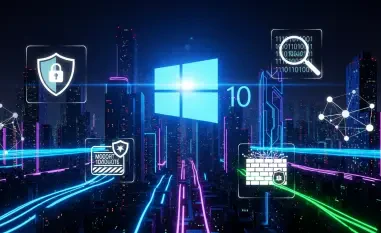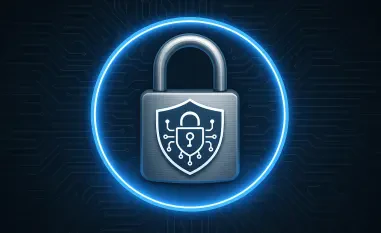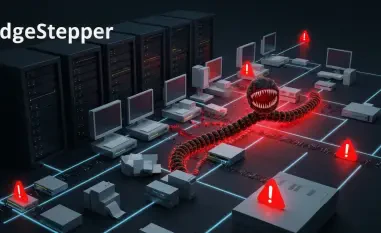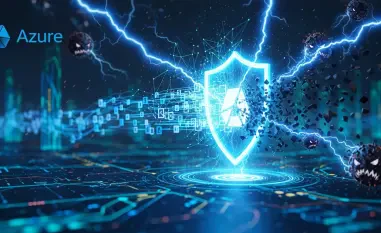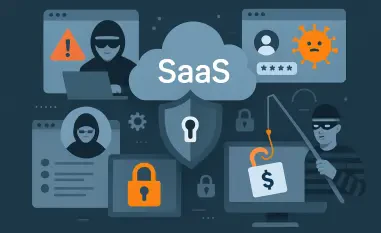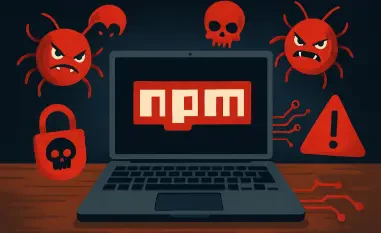Malik Haidar is a seasoned cybersecurity expert whose wealth of experience spans multiple domains, including threat analytics, intelligence, and robust security measures. His insight into the dynamics of cybersecurity threats, especially within multinational corporations, sets him apart in a field fraught with continuous challenges. Today, Malik offers a deep dive into the intricacies of emerging cybersecurity threats, focusing on Chinese hacking groups and their sophisticated methods.
Can you explain who the UnsolicitedBooker threat actor is and what their primary objectives are?
UnsolicitedBooker is a threat actor aligned with China, known for targeting international organizations with sophisticated tactics. Their core objectives appear to involve intelligence gathering and possibly espionage, mostly within governmental sectors across Asia, Africa, and the Middle East. They employ spear-phishing as a primary method to compromise their targets, luring them with deceptive emails often disguised as flight tickets.
How did ESET first discover the hacking group’s activities against the Saudi Arabian organization?
ESET initially identified suspicious activities directed at the Saudi Arabian organization in March 2023. This discovery was made possible by their advanced monitoring systems which detected unusual patterns in email traffic, coinciding with a phishing campaign. Over the next year, ESET could trace these activities to UnsolicitedBooker, mapping out their systemic approach and the tools they deployed, such as the MarsSnake backdoor.
What tactics does UnsolicitedBooker use to infiltrate their targets, and can you describe the role of spear-phishing emails in their strategy?
Their infiltration tactics revolve around spear-phishing emails, a personalized form of phishing targeting specific individuals within an organization. These emails typically include an attachment posed as genuine—for instance, a flight itinerary—that, when opened, triggers malicious code designed to plant a backdoor into the victim’s system. Such targeted phishing not only garners access but can also harvest sensitive information critical for further exploitation.
Could you tell us more about the MarsSnake backdoor? How does it work and what are its capabilities?
MarsSnake is a complex backdoor specifically designed to establish a remote connection with a command and control server once activated. Its capabilities are extensive, allowing attackers to execute arbitrary commands and read from or write to the file system covertly. This makes it a potent tool for sustained access and data exfiltration, leveraging the infected system almost like a remote terminal for the attacker.
How do UnsolicitedBooker’s methods compare to other Chinese hacking crews, especially in their use of backdoors like Chinoxy, DeedRAT, Poison Ivy, and BeRAT?
UnsolicitedBooker’s approach blends well with the known strategies of other Chinese hacking entities, which often rely on a suite of similar backdoors. These tools are engineered for espionage and data extraction, allowing comprehensive system control akin to their counterparts, such as Chinoxy and Poison Ivy. However, their distinctiveness may lie in consistent use of MarsSnake, indicating a streamlined preference or signature style.
What are some similarities between UnsolicitedBooker and the threat cluster known as Space Pirates?
Both UnsolicitedBooker and Space Pirates show significant overlaps in their targeting patterns and operational methods, especially regarding their preferred regions and entities. Their techniques often involve sophisticated phishing attacks and the deployment of multi-functional backdoors, indicating a shared knowledge base or strategic alignment within a broader network of aligned threat actors.
How was the recent January 2025 campaign against the Saudi Arabian organization conducted, and what was the intent behind using a flight booking decoy?
The January 2025 campaign involved spear-phishing emails masquerading as credible communications from Saudia Airlines, featuring flight bookings as the lure. This decoy served two purposes: establishing trust to bypass initial security filters and compelling the target to engage with the attached malware-laden document—ultimately facilitating entry and subsequent implant activation within the organization’s network.
Could you elaborate on how the phishing email implant process works, from the Word document launch to the execution of MarsSnake?
Upon opening the Word document, embedded macros are activated, silently executing a set of instructions that place MarsSnake onto the system. The macro deciphers a payload into an executable file written onto the system, which then loads MarsSnake as its operational utility. This sequence ensures that the backdoor communicates and interfaces with the attacker’s remote server for further instruction and control.
What insights does the repeated targeting of the same Saudi Arabian organization over three years give us about the motives of the attackers?
This persistence implies a high strategic value in the organization targeted, possibly indicating unique data or intelligence crucial to UnsolicitedBooker’s broader mission. Such focused efforts suggest a commitment beyond opportunistic data theft—potentially related to geopolitical interests or long-term objectives requiring ongoing surveillance or influence.
How does the activity of PerplexedGoblin differ from that of UnsolicitedBooker?
While UnsolicitedBooker is heavily rooted in spear-phishing and maintaining long-term access through specialized backdoors, PerplexedGoblin tends to exhibit occasional bursts of activity targeting diverse entities, like Central European governments. This difference suggests varied focus areas or motivations, possibly influenced by differing directives or inherent capabilities within their infrastructure.
What are DigitalRecyclers’ known methods, and how do they specifically operate within the APT15 galaxy?
DigitalRecyclers are associated with sophisticated network obfuscation techniques, notably using ORB networks to mask their traffic. Within APT15, they exploit backdoor technologies such as RClient and GiftBox, orchestrating data breaching exercises while remaining discreetly embedded within their target systems. They’re adept at manipulating communication protocols to enhance security circumvention.
What is the significance of the KMA VPN operational relay box (ORB) network in concealing the DigitalRecyclers’ network traffic?
The ORB network is critical in camouflaging DigitalRecyclers’ digital footprint, making detection by cybersecurity measures significantly harder. By routing traffic through multiple layers of VPN-protected relay boxes, they effectively hide any inbound or outbound data flows, ensuring their activities remain covert. This operational stealth demands enhanced detection strategies from defenders.
Can you discuss the capabilities and functions of backdoors like RClient, HydroRShell, and GiftBox used by the DigitalRecyclers?
These backdoors provide comprehensive access to compromised systems, facilitating real-time command execution, data collection, and payload deployment. HydroRShell differentiates with its unique use of Protobuf for structured command and control communications—an unconventional choice that enhances data serialization, promoting efficient and secure message transactions between servers and infected hosts.
How does HydroRShell stand out from other backdoors, and why is the use of Protobuf for C&C communications uncommon?
HydroRShell stands out due to its implementation of Protobuf, which provides structured data serialization unlike traditional methods often based on simpler plaintext or XML. This complexity in communication underlines a pursuit for efficiency and security in data transfers—a hallmark more commonly seen in advanced cryptographic practices than in standard backdoor conduct.
What is the strategic importance of employing full-feature backdoors like MarsSnake and HydroRShell in modern cyber attacks?
These fully-featured backdoors offer unlimited access to compromised systems, significantly empowering threat actors in pursuit of surveillance, data manipulation, or operational control. Their integration into modern cyber strategies reflects a necessity for sophisticated tools capable of exhaustive system penetration and command relaying, especially in targeted espionage campaigns.
Why do you think MarsSnake seems to be exclusively used by UnsolicitedBooker, while HydroRShell is by DigitalRecyclers?
Such exclusivity could point to strategic differentiation, with MarsSnake tailored specifically to UnsolicitedBooker’s infrastructure or operational needs. HydroRShell’s design, conversely fitting DigitalRecyclers’ communication requirements, might signify internal development efforts or preferred technological frameworks aligning with their long-term objectives.
What does ESET recommend for organizations to better protect themselves against such sophisticated threats?
ESET advises adopting multi-layered security frameworks that include continuous network monitoring, regular security audits, and advanced phishing detection mechanisms. Strengthening endpoint defenses and cultivating awareness and training programs is equally crucial to ensuring that employees recognize and counter these sophisticated attempts at infiltration.
What does your team at ESET plan to further investigate or focus on after these findings?
Our focus will be on developing even more intricate detection techniques and bolstering predictive analytics to foresee and neutralize emerging threats. Cross-collaboration with global cybersecurity entities will be pivotal in creating a formidable defense network, integrating advanced machine learning models to enhance our capabilities in identifying and addressing these sophisticated attacks.
How significant is international cooperation in tackling and mitigating threats from actors like UnsolicitedBooker and DigitalRecyclers?
International cooperation is vital, given the global scale and interconnected nature of cybersecurity threats. Sharing intelligence and establishing collaborative efforts with international partners can lead to better threat visibility, enhanced resource allocation, and unified response strategies that make combating these actors more systematic and effective.
What is your forecast for cybersecurity trends concerning threat actors over the next few years?
As technology evolves, so too will the sophistication of threat actors. I foresee a pivot towards more AI-driven attacks, leveraging automation to enhance phishing strategies and backdoor capabilities. Additionally, there will be increased adoption of decentralized infrastructures, challenging current perimeter-based defenses and necessitating innovative protective measures focused on anomaly detection and adaptive cybersecurity.


